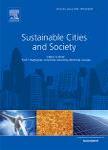版权所有:内蒙古大学图书馆 技术提供:维普资讯• 智图
内蒙古自治区呼和浩特市赛罕区大学西街235号 邮编: 010021

作者机构:Green Energy Pk IRESEN UM6P Benguerir 43150 Morocco Offenburg Univ Appl Sci Inst Energy Syst Technol INES Offenburg Germany Univ Lyon Ecole Cent Lyon ENTPE CNRSLTDSUMR 5513 F-69518 Vaulx En Velin France Rabat Natl Sch Mines LMAID Lab Rabat 10070 Morocco
出 版 物:《SUSTAINABLE CITIES AND SOCIETY》 (Sustainable Cities Soc.)
年 卷 期:2025年第120卷
核心收录:
学科分类:0820[工学-石油与天然气工程] 082803[工学-农业生物环境与能源工程] 08[工学] 0828[工学-农业工程] 0814[工学-土木工程] 0833[工学-城乡规划学]
基 金:DAAD (German Academic Exchange Service)
主 题:Rural school Passive design Multi-objective optimization Net zero energy building Indoor comfort
摘 要:Given the importance of reducing energy bills in the building sector, especially for schools located in rural areas, where detachment from the grid electricity is recommended, achieving energy self-sufficiency is crucial to provide a conducive indoor environment for students while minimizing energy costs. Therefore, this paper presents a comprehensive methodology aimed at enhancing building energy efficiency, indoor thermal comfort, and achieving net zero energy self-sufficiency for a rural school building, by developing a climate-responsive architectural paradigm for rural schools, ensuring adaptability to diverse environmental conditions while striving for energy independence through passive design strategies. Employing multi-objective optimization with the NSGA-II genetic algorithm, passive design parameters such as construction type, glazing type, insulation specifications, roof vegetation, window overhang, and outdoor shading structures were evaluated across six distinct climatic zones in Morocco. Integration of EnergyPlus, jEPlus, and jEPlus+EA software facilitated the optimization process. Pareto fronts of optimal solutions were generated, prioritizing the minimization of heating and cooling energy consumption alongside discomfort hours. Results demonstrate that the optimized solutions effectively enhance building energy efficiency and indoor thermal comfort while achieving net zero energy status across all studied climatic zones. Optimal solutions enhanced building energy efficiency by 18.6 % - 35.6 %, tailored to climate and school design.